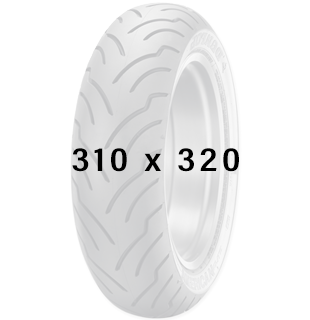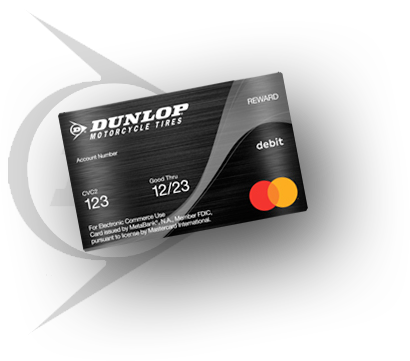Your Guide to Motorcycle Trip Planning
Nothing compares to exploring the world on two wheels. With careful planning, a motorcycle trip is a great way to make memories that will last a lifetime.
Whether your adventure takes one day or two months, the first step is to check that your bike’s tires, battery, engine, brakes, lights, and other parts are all in good working order. If there is any maintenance that needs to be done soon before you embark on your travels, do it now. Long road trips can be hard on the components on your motorcycle and you don’t want to derail your trip with stops due to poor maintenance.
Once you’re happy that your motorcycle is in tip-top condition, it’s time to decide where you want to go, how long you’ve got, and what you want to see.
Where will your road trip take you?
Before you head out on the highway, it’s a good idea to research the various options. While you may or may not have a specific destination or route in mind, there are many resources to help make your trip successful.
- Calimoto: If you are looking for curvy, scenic rides, then check out this website and app
- Motorcycle Roads: Here, you’ll find motorcycle rides for each state and get to read lots of rider-route feedback
- REVER: Use this app to track your ride. It features more than 3000 route options
- America Rides Maps: This site is a great place to buy pocket and full-size maps
- Harley-Davidson: If you want to plan your road trip, then this is the right place to search for suitable options
The good news is, if you love cruising, you’ll find lots of trip-planning resources available to you. When choosing your ideal route, the key to success is to ensure that you allow enough time to make up the miles and plan your stops accordingly. Don’t forget to factor in stops for food, fuel, photo ops, and chill time to take in the scenery.
It’s also important to be aware of when and where you’re riding. For example, if you’re riding in a forestry area in the spring, there may be wildlife crossing the road. Make sure to keep an eye out for any signs or warnings, and adjust your speed and riding accordingly. Once you’ve nailed down the route, you can start to list what gear you’ll need to take with you, such as a helmet, gloves, and protective clothing.
What will you Need?
Last-minute packing may be okay for a short trip, but if you’re planning to cover any distance, you need to be ready for multiple scenarios.
Fuel, food, and stopovers
Food and fuel are two top priorities. So, first, consider the amount of mileage you will likely clock up during your trip. Plus, of course, the size of your tank. Depending on your route, gas may not be readily accessible, especially if you are riding through mountain or desert areas. Also, not all remote gas stations accept credit or charge cards, so take some cash.
Calculate an approximate idea of your total mileage, factoring in extra miles for exploring or getting lost along the way! Next, work out how often you are likely to need to refuel. Most motorcycles have a range between 100 to 300 miles, far smaller than most cars. Carefully planning out fuel stops will ensure you can finish your journey on your bike, not by foot.
Google Maps is a great resource and can help you locate gas stations and rest areas. What’s more, it allows you to enjoy your trip stress-free and without having to search for gas in unknown areas.
Once you’ve sorted out fuel for your bike, the next thing on the agenda is to find potential places to eat and drink. A road trip means you’ll come across some cool places along the way. Depending on the time of year and destination, you may also want to key some options into your GPS before you leave home.
When you ride is also important. Riding during daylight hours will help prevent drowsiness and keep you alert on the road.
Be realistic about the number of hours you’ll spend in the saddle, as this will determine the location of your overnight stops. Whether you’re camping or staying in motels along the way, plan your route. This procedure will let you choose your overnight stop based on distance or a particular area you want to explore.
A good tip is to book any accommodation in advance, especially if you’re traveling during the holiday period. After a long day in the saddle, the last thing you want to hear is there’s no room at the motel, hotel, or campground.
Preparing for the weather
Your road trip may involve riding through different climates. In which case, be prepared for all weather conditions. Doing this means packing suitable motorcycle gear and accessories. Waterproof luggage is a sensible idea, along with layered clothing, rain gear, rain covers, ponchos, and goggles. A properly sized windshield and saddlebags will remedy a lot of these weather issues. On the flip side, if you ride in the sunshine, you’ll need shades to protect your eyes. In the summer, hydro backpacks will allow you to hydrate without having to stop for water breaks.
Get to grips with your group
If you aren’t going it alone, get together with the other riders in your group and devise a plan of how to deal with bad weather. Also, groups can easily become separated, so agree on rendezvous points on the route. Finally, it can be a good idea to decide on a group leader before you set off and ensure everyone is on the same page. It’s a great way to avoid arguments further down the road.
The best-laid plans of mice and men!
Planning a motorcycle trip makes for a great riding experience. Knowing places to stop and setting a realistic daily mileage target will allow you to make the most of the journey. Remember, no matter how good your plans are, there is always some unexpected delay or situation to throw a curveball. So before you set off, let a friend or family member know where you are heading. Take a walkie-talkie with an ‘in case of emergency’ contact, as walkie-talkies can run off of batteries and don’t need a call signal to operate. Most police or emergency services can be contacted with a walkie-talkie, which gives that extra sense of security that you can contact someone in case of an emergency.
Pack in advance and run through those all-important planning details. Then, do one more check over your bike. Do you have plenty of tread on your tires, and are they correctly inflated? Is your battery charged? Do your lights work and is your luggage secure? Yes? Then you’re good to go; enjoy the ride!









